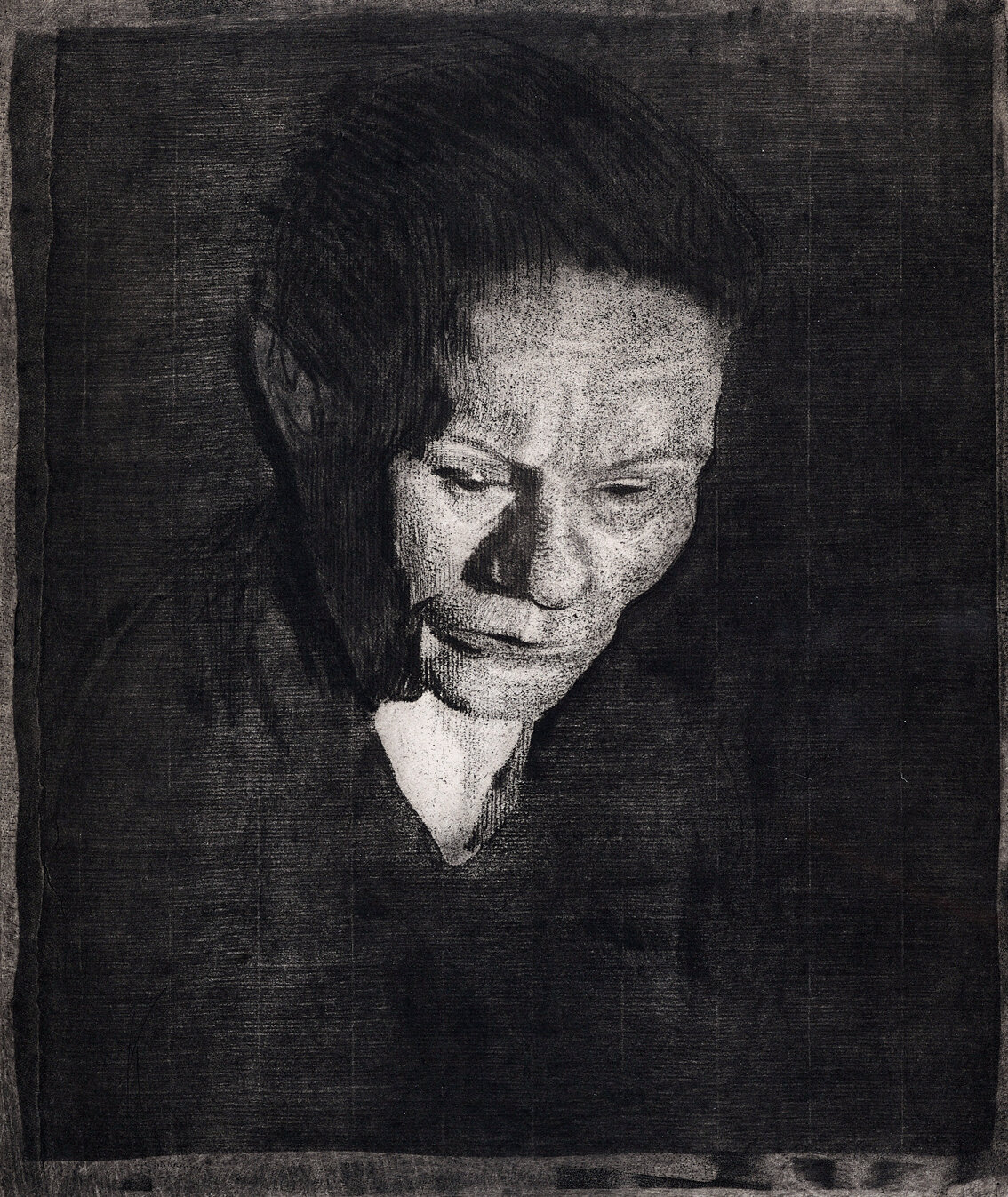Unknown (in the style of Rembrandt), Deposition of Christ, Etching with drypoint, date unknown, The Noble Maritime Collection, Gift of Barnett Shepherd
Etching
Etchers paint a thin acid-resistant ground onto a copper or zinc plate. Then, with a long steel needle, they draw through the dried ground and expose the metal underneath. This is an intaglio technique because the image is formed by cutting into the plate. They then submerge the plate into an acid bath. The acid eats away the metal areas, “etching” them into the plate. The artist puts ink on the plate, and the ink goes into the etched areas. The artist then wipes off the excess ink. After dampening a sheet of paper, the artist puts the paper on the inked plate and passes both paper and plate through the press. The etching press puts thousands of pounds of pressure onto the plate, forcing the ink onto the paper and creating a working print, called a proof. The artist can repeat the process of drawing onto a reground plate or scraping away at areas until he is satisfied with the image, and the plate is ready to edition. To create an edition of identical prints the plate must be inked and wiped the same exact way, and the same paper used each time a print is made.
The crayon-manner technique aims to imitate drawing. When etching into the plate, the artist uses a tool called a roulette which has a handle carrying a small, narrow steel wheel with a serrated surface. The roulette’s wheel is rolled along the intended lines of the image and each serration breaks through the wax ground on the plate which produces a textured line that resembles the crumbly line like those in a chalk drawing.
The artist can also add a second process to the etching, such as aquatint or drypoint.








